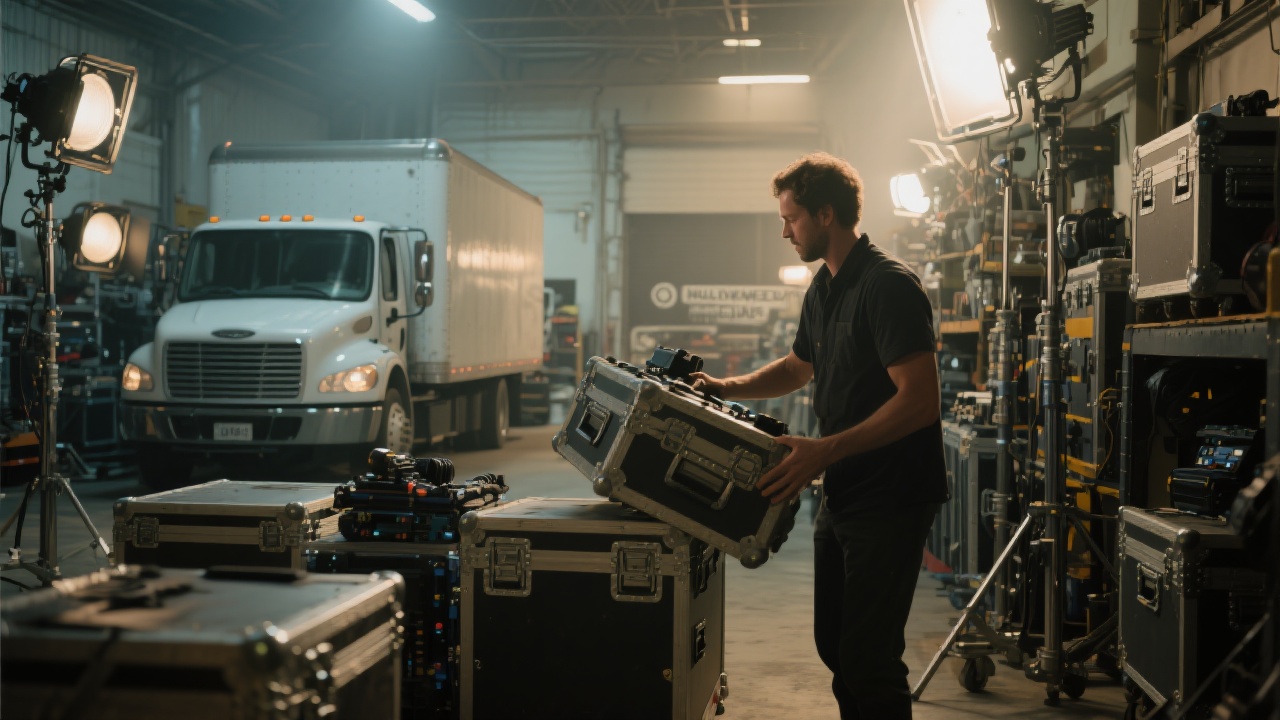
All New Producing Lessons
The all-new producing series lifts the curtain on the business of filmmaking. From raising money and starting a company to paying people and working with unions, students learn from seasoned Hollywood producers how to produce a marketable product.

How to Form a Company
In this lesson, learn the types of corporate structures, how single purpose vehicles protect the parent company, how to protect your assets, and create an LLC. (19:17)
- Learn the importance of creating a company
- How a shell company can protect personal assets
- The types of companies
- How to create an LLC
- How shell companies work in the studios
- How indie filmmakers can take advantage of corporate tax benefits

Raising Money
Learn how money is raised and the various financial instruments including development funding, equity and debt financing, credit cards, bank loans, pre-sales, gap financing, tax incentives, and crowd funding. (45:50)
- How to work with investors
- Securing development funding
- Types of equity funding
- Funding a movie on credit cards
- Debt financing
- Securing a bank loan
- Pre-sales from foreign distributors
- Gap financing
- Using tax incentives to secure funding
- Crowd funding techniques

Tax Incentives
Learn how to take advantage of tax incentives, the difference between rebates and credits, how to convert credits into money, what to expect during the auditing process, and how to collect your money. (24:37)
- How tax incentives attract production
- Tax rebates
- Tax credits
- Controversy surrounding tax credits
- How to collect money from incentives

Manging the Budget
Learn how to set up and manage dedicated bank accounts, protect investor funds through escrow and completion bonds, and allocate budgets effectively across pre-production, filming, and post-production. (23:16)
- How to set-up a bank account
- Managing production accounts
- Working with escrow accounts
- Working with bond companies
- The flow of money through a production

Common Expenses
Learn how to manage common production expenses, including per diem, mileage reimbursement, petty cash, loan outs. (21:49)
- Working with crew members, rented gear, and kit fees
- Meal penalties and union guidelines
- Managing per diem when on location
- Mileage reimbursement
- Handing and tracking petty cash

Working with Vendors
Learn to find qualified vendors in your shooting area, manage relationships with vendors, the financial workflow from purchase orders to invoices, and tips to making sure you get the resources you need on set. (17:49)
- How to find qualified vendors
- Vendor relationships
- How to request a quote
- Purchase orders and invoices
- Insurance requirements
- Lost and damaged equipment
- Managing rented equipment

Contracts and Attorneys
This lesson teaches filmmakers the essential legal and contractual foundations of production, covering entertainment attorneys’ roles, key agreements like deal memos and location releases, business structuring, hiring compliance, and risk management to protect their projects and careers. (17:54)
- Working with entertainment attorneys
- Importance of contracts and agreements
- Deal memos for cast and crew
- Starting paperwork
- Required legal forms
- Payroll and payment forms

Managing the Production Office
Learn how to scout, negotiate, prepare, and manage a production office when shooting on location. From finding the perfect location to meeting the needs of everyone involved, this lesson covers the essentials to ensure a smooth shoot. (14:44)
- What to look for when scouting potential office space
- Common challenges when renting for a production
- How to configure the space
- How to close the office down

Hiring People
Learn the process of hiring both above the line and below the line people, hiring union vs non-union and the implications, understand who hires crew, and how to manage problematic workers. (19:11)
- Above-the-line vs below-the-line hires
- Hiring union vs non-union
- Who hires the crew
- Managing problematic people
- How to fire someone

Paying People
From independent contractors to employees, learn how to calculate day rates, structure payments to crew members, manage workers’ compensation, handle tax deductions, loan outs, pay or pay clauses, and more. (27:59)
- How to negotiate rates
- Who handles workers pay
- Pay or pay clauses
- How to calculate day rates
- Calculating overtime rates
- Hiring employees vs independent contractors
- Workers compensation
- Hiring crew as loan out

Unions and Guilds
Learn how the unions function, the benefits for members, the key unions: IATSE, DGA, SAG-AFTRA, and WGA, the differences in hiring union and non-union crew, how productions flip, and how to shoot in a “Right-to-Work” state. (37:15)
- Defining a union or guild
- What are union membership benefits?
- SAG-AFTRA
- Directors Guild of America
- Writers Guild of America
- Producers Guild of America
- IATSE
- Union vs non-union hires
- How flipping a show works
- Shooting in Right to Work states

Working with SAG-AFTRA
Learn how SAG functions, the ramifications of the SAG-AFTRA merger, how signatories work, how the Taft-Hartley act admits new members into SAG-AFTRA, and the benefits and drawbacks of Financial Core. Be prepared when working with SAG-AFTRA actors on your production. (24:01)
- What is SAG-AFTRA?
- How to become a signatory
- What happens when a production hires SAG-AFTRA actors
- Taft-Hartley and union membership
- Financial Core

Insurance
Learn how to insure your production against liabilities and costs incurred from accidents, the types of insurance you’ll need, where you can buy production insurance, the costs of insuring a production, cast insurance, film and video tape insurance, equipment insurance, and E&O insurance. (22:09)
- The importance of insurance
- Certificates of Insurances
- General liability insurance
- Cast insurance
- Media insurance
- Equipment insurance
- Workers’ compensation insurance
- Errors and emissions insurance









